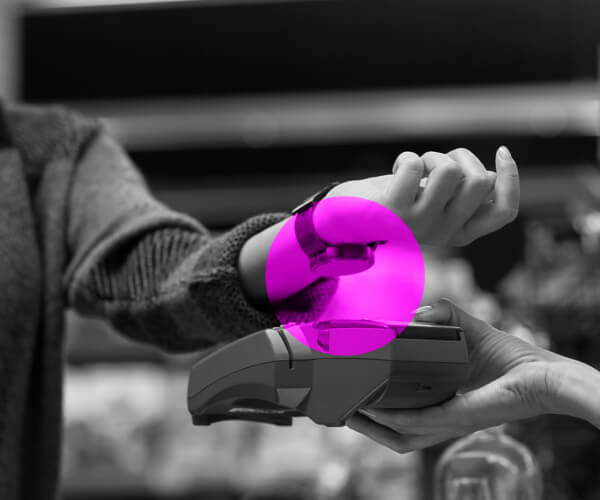Note: If you are enjoying this series on our behavioral framework you might enjoy our virtual behavioral masterclass, You Better Behave!, on Wednesday, March 31st, from 12-6PM EDT.
Join Behaviorally, Protobrand and Maru, along with numerous brand-side presenters, to hear more about behavioral science in action, helping brands make smarter, more effective decisions.
Learn More & Register
This is the third installment of our series on Behaviorally’s refreshed behavioral framework. As a refresher for the previous installments, when we re-launched the company in January, we talked at length about how we approached making it uniquely effective to help clients drive shopper growth. With this in mind, we have refined our behavioral framework to be:
- Simple but not simplistic
- Grounded in academic rigor
- Tied to recommendations wholly focused on driving shopper growth
Last time we addressed how, unlike many behavioral frameworks that are complicated and abstract, our refreshed framework was designed to be dead simple! It is straightforward, and specifically focused on shopper marketing! We took the time to digest all the learning out there and how it has been applied to many of society’s bigger challenges, distilling it to the two simple factors of benefits and barriers – but still retaining all the behavioral science “meat on the bones”. In this installment, let’s review what we mean by “not simplistic“.
Not Too Simplistic to be Meaningful and Applicable
There is such a thing as too simple so as to be simplistic and ultimately unreliable as a blueprint for decision making.
An entire branch of academia referred to as “behavioral science” was born out of the desire to add scientific evidence of how behavior is influenced, how habits are formed, and how choice can be reliably predicted. Universities large and small have developed advanced programs leveraging learning around psychology and cognitive science to understand the concrete evidence behind the theories of what makes humans do what we do (we will talk more about this in Installment 4 of our series, when we delve into the “grounded in academic rigor” part of our model). Subsequent use cases have been endlessly studied to show how behavioral science can explain, predict, and ultimately nudge us, as irrational humans, to act – as citizens obeying laws, patients complying with medical protocols, and practicing (or changing) habits to promote better health, and even consumers making shopping decisions.
In “Thinking, Fast and Slow”, Daniel Kahneman took 519 pages to explain the concept of behavioral economics that won him a Nobel prize, in fairly dense academic detail. (To put this in a different context, the audio version of “Thinking, Fast and Slow” is 20 hours and 2 minutes long!)
As fascinating as the theories sound, clients (particularly in the CPG and FMCG space focused on shopper marketing decisions) often struggle to digest it, figure out what it all means to them, and how to apply it practically.
There was a period of time since Kahneman’s Nobel notoriety (he was the only psychologist to ever win a Nobel prize for Economics) popularized the concept, when every research agency’s presentations (including some we can sheepishly claim ourselves) included some reference to his now famous “System 1 and System 2” explanation for human behavior.
Too often when asked to explain Kahneman’s very correct, but dense, theories on human behavior, most agencies would reduce it down to the much too simplistic explanation: “Well . . . System 1 is emotional; System 2 is rational”.
Market research, by and large, did a disservice to decades of massively important academic study that anchored behavioral science, including the work of people like Dan Ariely and Richard Thaler, by attempting to take the “big ideas” of behavioral principles, and dumb them down to such a sound bite. Too many tried to embrace the “System 1 and 2” mantra and shoehorn all their old metrics into something they could claim measured emotional versus rational behavior. Agencies debated endlessly over the best behavioral metrics. Should they be implicit versus explicit? Conscious versus unconscious. Instinctive and intuitive versus cognitive and considered. Left-Brained versus Right-Brained (as though we don’t use our whole brain to act and make choices). Should we rely solely on neuroscience and biometrics? (In the early days of fMRI scanning there is a hilarious example of a dead salmon wired up and registering signals to measure emotion. But I digress.)
System 1 and System 2 became the shorthand for dividing all behavioral research into emotional or rational. We would argue that, for clients, it simply didn’t stick.
One agency we know has even famously invented the idea of “System 3” as a means of covering up what the overly simplistic “emotional versus rational” seemed to miss.
This bifurcated explanation was too simplistic and didn’t seem to make sense as the driver of all human behavior or a formula for brands wanting evidence with which to make big decisions (particularly in shopper marketing) and drive growth. Rightly so, even if certainly choices are more intuitive and instinctual versus deeply considered, we are always using both characteristics of our brains simultaneously, without reliable clinical tools to decisively determine how to influence either. Defining and diagnosing a purely emotional versus rational score might be interesting, but brands typically are left with “Now what?”; an actionable formula for success needs more.
Striking the Balance
As with many of the other principles in behavioral science there, is massive value in understanding the meaning behind Systems 1 and 2, as well as other basics, like the impact of scarcity, context, memorability, and social proof on human decision making. And for that, we have much to thank our colleagues in academia for their work. It has led to advances in public sector initiatives as well as building awareness and adoption for the science itself.
For us, the uniqueness of our framework, perhaps, is our committing to taking all the rigorous science behind the thinking, and as we mentioned in the last installment, distilling it to simple questions that are focused squarely on shopper marketing.
Whether we are evaluating packaging, POSM or pricing, or the context in which a product is seen, or the omnichannel shopper journey that brings a consumer to the moment of choice:
- Does the shopper marketing convey enough benefit to be a motivation to consider and buy a product?
- Does it remove enough friction so as not to be a barrier to consumer behavior, and maybe even reinforce a habit that is advantageous to a brand’s desired outcome?
And if the answers to either are no, what are the steps a brand can take to correct the deficit and drive shopper growth?
That is our simple, but not simplistic, framework, and we would love to talk about applying it to your specific business challenges.
Next installment? We will address how our simple framework is grounded in academic rigor. That behavioral science “meat on the bones” we eluded to earlier.
THE AUTHOR
Scott Brill leads the Market Development Team at Behaviorally as Chief Commercial Officer, focused on driving growth through new and innovative shopper research solutions. He has nearly 20 years of experience in market research, including his previous role as Chief Commercial Officer with PRS IN VIVO. He is a graduate of Muhlenberg College with degrees in Business Administration and Global Economics. He is passionate about applying behavioral science to understand the consumer decision-making process across the digital and physical shopper journey … as well as golf, the beach, grilling, and spending time with his wife, son, and chocolate lab.
Chief Commercial Officer, focused on driving growth through new and innovative shopper research solutions. He has nearly 20 years of experience in market research, including his previous role as Chief Commercial Officer with PRS IN VIVO. He is a graduate of Muhlenberg College with degrees in Business Administration and Global Economics. He is passionate about applying behavioral science to understand the consumer decision-making process across the digital and physical shopper journey … as well as golf, the beach, grilling, and spending time with his wife, son, and chocolate lab.
